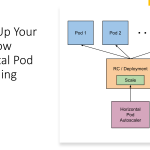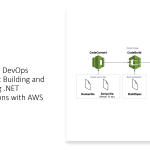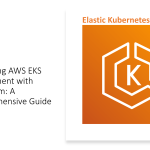Continuing from my previous blog, let’s dive deeper into the implementation of DevSecOps.
Integrating Security into DevOps
To implement DevSecOps, it is essential to integrate security into every phase of the DevOps lifecycle. The following are the key phases in DevOps and how to integrate security into each phase:
- Plan: In the planning phase, it is essential to identify the security requirements and create a plan for integrating security into the software development process. Security requirements should be defined, including compliance and regulatory requirements, security policies, and security best practices.
- Develop: In the development phase, it is crucial to ensure that security is integrated into the code development process. Developers should receive security training and education, and secure coding practices should be enforced. Static code analysis tools can be used to identify security vulnerabilities and prevent them from entering the codebase.
- Test: In the testing phase, security testing should be automated, and testing should be conducted at multiple levels. Dynamic application security testing (DAST) and penetration testing should be used to identify vulnerabilities in the software. Vulnerability scanners can be used to identify and remediate vulnerabilities.
- Deploy: In the deployment phase, security should be integrated into the deployment process. Security checks should be automated and conducted before deployment. Infrastructure as code (IaC) tools can be used to automate the deployment of secure infrastructure.
- Operate: In the operation phase, security should be monitored continuously, and any security issues should be addressed immediately. Security incidents should be tracked and analyzed, and lessons learned should be used to improve the security posture.
DevSecOps Best Practices
Here are some best practices for implementing DevSecOps:
- Create a security culture: Encourage a security culture where everyone in the organization takes responsibility for security.
- Automate security: Automate as much of the security process as possible, including security testing and remediation.
- Integrate security into the DevOps process: Integrate security into every phase of the DevOps process, from planning to operation.
- Use security tools: Use security tools, such as DAST, SAST, and vulnerability scanners, to identify and remediate security vulnerabilities.
- Educate developers: Provide security training and education to developers, enabling them to build and deploy secure software.
- Implement DevSecOps in small steps: Start with small steps, such as integrating security into the planning phase, and gradually increase the scope of DevSecOps implementation.
Benefits of DevSecOps Implementation
Implementing DevSecOps can provide several benefits, including:
- Increased security: By integrating security into the DevOps process, organizations can identify and remediate security vulnerabilities early in the software development lifecycle.
- Improved collaboration: DevSecOps breaks down silos between teams, enabling better communication and collaboration.
- Faster time-to-market: Security checks are automated and integrated into the software development process, enabling faster delivery of secure software.
- Reduced costs: Fixing security issues earlier in the development process reduces the costs associated with fixing them after the software is deployed.
Conclusion
DevSecOps is a critical practice that enables organizations to build and deploy secure software. By integrating security into every phase of the DevOps lifecycle, organizations can improve security, collaboration, and time-to-market. By following best practices and implementing DevSecOps in small steps, organizations can achieve the benefits of DevSecOps while minimizing disruption to existing processes.



